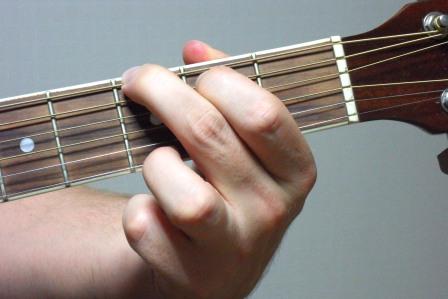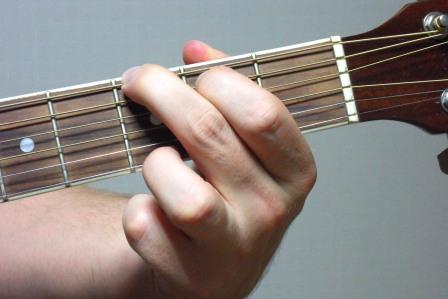TheGuitarLesson.com
This post appeared first at Free Guitar Chord Library on TheGuitarLesson.com, thanks for reading.
Learning to play the guitar involves learning to play chords on the guitar. How many chords should you learn? As much as you need to achieve your goals. Usually, the more you play, the more you’ll want to learn. I usually recommend you start out with the beginner guitar chords, and work your way up from there.

Learn those chords!
Once you start playing songs, you’ll need to learn a whole bunch of chords anyways, it’s all part of the learning process. This is why we created our free guitar chords library, containing the chord chart and fingering to over 1,000 chords. Now will you need to memorize all of those chords? No way! But the chord library provides a great reference for you, when you don’t know the fingering to a chord, looking for the intervals of a chord, or the you need to play to arpeggiate it.
The new database of chords is made up of the most popular beginner, and advanced chords you’ll need. The database is split into 7 sections, representing the chords you’ll play in the 7 notes (A, B, C, D, E, F, G). As always, I wanted to create something that has true value added, something that my students will truly benefit from and won’t find anywhere else.
Here are the little extras, that makes our library of guitar chords one of the best you’ll find anywhere:
- Chord intervals: For those of you learning chord theory, you’ll have heard of how intervals of the major scale make up any given chord, meaning that you need to count your way up on the major scale, starting from the tonic, and find the notes you need for the particular chord, be it a major, a 13b5, or whatever. The chord library has the intervals of each chord type, helping you along the way.
- Chord notes: As you know, chords are made up of notes. The notes are set by the intervals of the chord as per the major scale. The guitar chord library includes the notes you’ll need to play with each chord. For example, check our the G major guitar chord. You’ll notice that it requires the notes G – B – D. Also, check out the A minor chord. You’ll see the notes you play with this chord as well, and the list goes on for every single chord in our collection of over 1,000 guitar chords.
- Chord charts and fingerings: Naturally, a chord library would not be complete without illustrated chord diagrams, including the exact fingering for each chord.
- Chord voicings: If you haven’t been playing too long yet, you may not be familiar with chord voicings yet. Playing a chord in different voicings will mean playing the same notes that the chord requires, but at different places on the neck of the guitar. For example, check out the D major guitar chord, and you’ll find 6 different ways to play the chord. You’ll probably already be familiar with 2 of the shapes, but there are 4 more to choose from, if you want to get create.
I truly hope that our collection of guitar chords will be to the benefit of our students, regardless of whether they are at beginner or more advanced levels.
TheGuitarLesson.com is your source for beginner guitar lessons.
Read More
This article is from an external source and may contain external links not controlled by Empeda Music.

